Solana bridges stand out as crucial tools for driving innovation and promoting interoperability within the blockchain ecosystem. By facilitating seamless connections between different blockchains, these bridges play a pivotal role in fostering collaboration and expanding the capabilities of decentralized technologies. Today, let’s join Coincu to learn about the outstanding Solana bridges in this ecosystem.
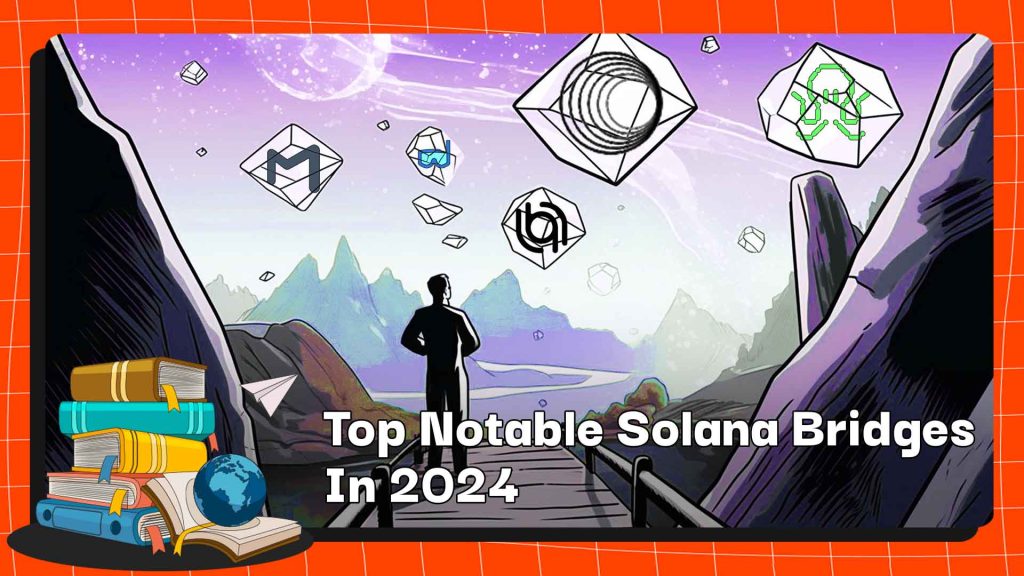
What is a Solana bridge?
Solana bridge facilitates the seamless transfer of assets and tokens between the Solana blockchain and various other blockchain networks, such as Ethereum and Binance Smart Chain, ushering in a new era of cross-chain interoperability. The Solana bridge acts as a vital connector between different blockchain networks, eliminating the traditional barriers that often hinder the fluid movement of assets between ecosystems.
With the Solana bridge in place, users gain the ability to transfer a diverse range of assets effortlessly. Tokens, NFTs (non-fungible tokens), and other digital assets can now move seamlessly between Solana and other prominent blockchain networks. This transformative capability not only enhances liquidity but also empowers users by liberating them from the constraints of a single blockchain network.
Read more: Best Solana NFT Marketplaces In 2024 You Should Know
The best Solana bridges in 2024
Wormhole
Overview
Wormhole is a groundbreaking cross-chain bridge, offering users a streamlined solution for transferring assets between various blockchains. This innovative project introduces a message-passing protocol, fostering interoperability among more than 22 prominent chains, including Ethereum, Solana, BNB Chain, and others. Wormhole is currently the best Solana bridge today.
Wormhole initially gained recognition for establishing itself as a bridge with substantial liquidity, successfully linking the Ethereum and Solana ecosystems. However, at its core, Wormhole functions as more than just a conduit for asset transfers; it operates as a comprehensive protocol designed to address key challenges within the blockchain space.
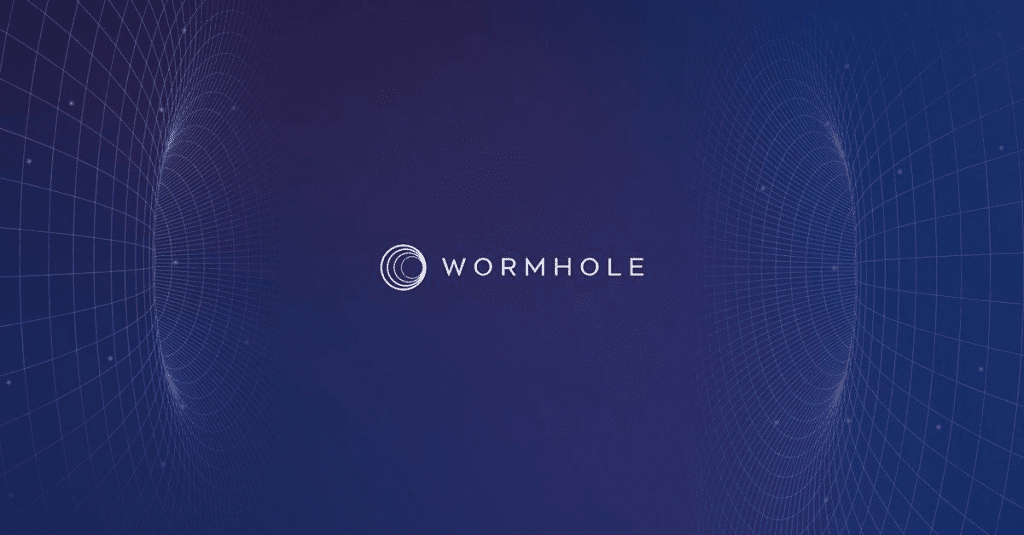
Features
- Portal Bridge: Pioneering Cross-Chain Asset Transfers
- Portal NFT Bridge: Crossing Chains with NFTs
- Carrier: A March 2023 Innovation
At the forefront of Wormhole’s advancements is the Portal Bridge, a cross-chain bridge project that operates on the underlying Wormhole protocol. The Portal Bridge not only facilitates the seamless transfer of assets but also exemplifies Wormhole’s commitment to user-friendly and secure cross-chain transactions.
The lock & mint process is elegantly simple:
- Users initiate the transfer of ETH (Ethereum) via the Portal Bridge.
- The transferred ETH is securely locked within a smart contract.
- A new coin, named wrapped ETH, is generated on Chain B (the destination blockchain) as a result of locking the ETH.
Wormhole extends its capabilities to the realm of non-fungible tokens (NFTs) with the Portal NFT Bridge. This feature provides users with a dedicated space to transfer their NFTs across a wide array of chains, including Ethereum, Solana, BNB Chain, Polygon, Avalanche, Fantom, Oasis, Karura, Aptos, and Celo.
The NFT Portal supports both the ERC-721 token standard (complete with metadata) and the SPL token standard, ensuring comprehensive compatibility and flexibility for NFT transfers.
Launched in early March 2023, Carrier represents a significant development on the Wormhole platform. Developed by Automata Network, Carrier operates as a bridge built upon the Wormhole protocol. Currently supporting 12 blockchains, including major chains like Solana, Ethereum, BNB Chain, and Polygon, Carrier aims to further expand its capabilities.
Carrier’s development roadmap teases forthcoming features, including swap functions and 2FA protection mechanisms. These additions are designed to enhance bridge safety and provide users with a secure environment for their cross-chain activities.
Read more: Top 6 Solana Native Projects By Category
Swim Protocol
Overview
Swim Protocol is a seamless multi-chain liquidity protocol built on the Solana blockchain. This revolutionary protocol combines an automated market-making mechanism (AMM) with the advanced cross-chain bridge functionality of Wormhole, providing users with a swift, direct, and hassle-free method to transfer native tokens across different chains, without the need for wrapped assets.
Swim Protocol has set its sights on becoming a prominent player in the cross-chain ecosystem. As part of its growth strategy, Swim Protocol is actively seeking collaborations and integrations with other DeFi protocols to further expand its network. Swim Protocol is among the top Solana bridges thanks to its user-friendly features.
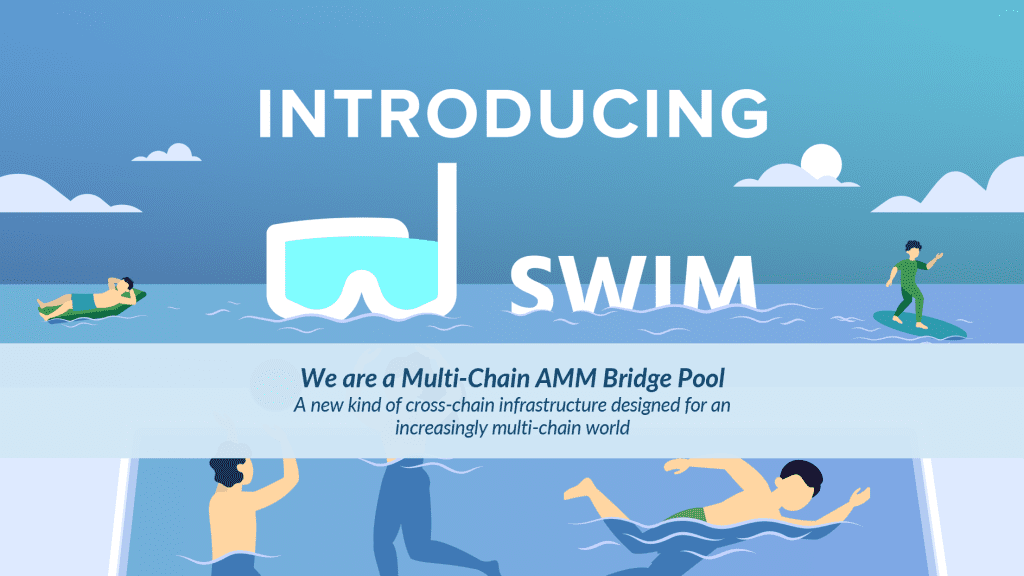
Features
- Multi-Chain Bridge for Direct Stablecoin Swaps
- AMM Style Bridge for Enhanced Stability
- Core Building Block in the Cross-Chain Ecosystem
Swim Protocol enables users to seamlessly swap and trade stablecoins from Ethereum, BSC, and Solana directly through the Wormhole bridge. The protocol ensures that users receive assets in their native token form. Upon confirmation of a transaction by Swim’s smart contract, an algorithm calculates slippage based on transaction size and group, determining the execution price.
Looking ahead, Swim Protocol plans to extend its reach by integrating with additional blockchains, starting with Avalanche, Polygon, Terra, and Fantom. Furthermore, Swim Protocol is set to launch its own stablecoin, swimUSD, providing users with the ability to swap and trade across various ecosystems using this native asset.
Swim Protocol introduces an Automated Market Maker (AMM)-style bridge, a departure from the traditional 1-to-1 bridge operation. In contrast to conventional bridges that provide equivalent wrapped tokens during swaps, Swim’s AMM bridge allows users to access and redeem tokens directly.
Users can seamlessly connect assets between different blockchains, leveraging Wormhole’s decentralized infrastructure for swift and stable transactions. Multiple wallet connections and real-time tracking of account balances across diverse chains further enhance the user experience.
Swim Protocol is dedicated to being the go-to platform for cross-chain interactions, particularly within the Solana ecosystem. Aimed at welcoming new Solana users, Swim Protocol enables seamless interaction with other blockchains, including those compatible with the Ethereum Virtual Machine (EVM), addressing a current gap in Solana’s compatibility.
Noteworthy is Swim Protocol’s commitment to security, with its Swim Pool receiving certification for safety from Kudelski Security Company. To encourage ongoing scrutiny, the protocol also offers a substantial $100,000 reward to individuals who identify and report security vulnerabilities in the system.
Mayan Finance
Overview
Mayan is a cutting-edge cross-chain swap auction protocol that has emerged on the Solana blockchain with the primary objective of optimizing exchange rates through a unique auction mechanism. It is one of the notable Solana bridges with many useful features.
In essence, Mayan functions as an inter-blockchain exchange auction protocol, facilitating seamless token exchange across different blockchains via a transparent auction process. The underlying technology employed by Mayan to transmit information between blockchains is the Wormhole message-passing protocol, ensuring efficient and secure communication.
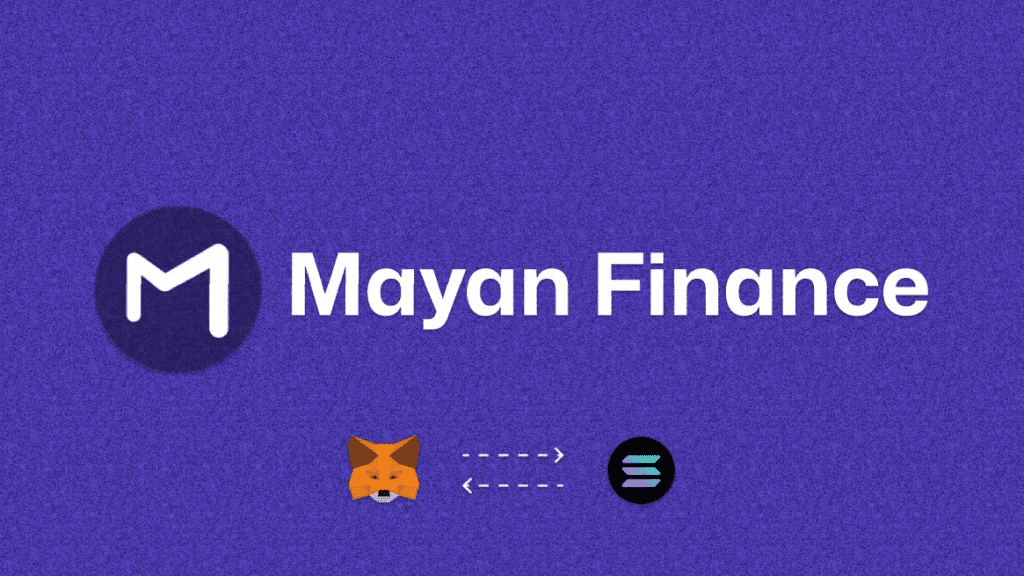
Features
Mayan Finance empowers users with the ability to seamlessly swap assets across different blockchain networks through its innovative swap auction mechanism.
Presently, the platform supports transactions on six major networks, including Ethereum, Binance Smart Chain (BSC), Avalanche, Arbitrum, and Solana. This broad network compatibility enhances user flexibility and widens the scope of asset-swapping possibilities.
At the heart of Mayan Finance is the Mayan Explorer, a powerful tool offering users a comprehensive view of their transaction history on the platform.
Users can easily access detailed information about each wallet transaction, including the source wallet address, source token, destination token, transaction timestamp, source chain, destination chain, and destination wallet address. This transparency provided by the Mayan Explorer ensures users have a clear understanding of their transaction activities on the platform.
A standout feature of Mayan Finance is its groundbreaking gas fee mechanism, providing users with added flexibility and cost-effectiveness. When executing a transaction on the destination network, users not only complete the transfer but also receive gas fees on the corresponding chain.
Additionally, users are rewarded with an output token, mitigating gas fees and facilitating smoother transactions on the destination chain. This dual benefit showcases Mayan Finance’s commitment to user-friendly and economically efficient decentralized finance solutions.
Allbridge
Overview
Allbridge is a cutting-edge Solana bridge on the ecosystem. The primary objective of Allbridge is to evolve into a multichain hub, guided by DAO principles, facilitating seamless bridges between EVM networks and other blockchain ecosystems.
The platform distinguishes itself as a decentralized, user-friendly, contemporary, and reliable token bridge designed for the efficient transfer of assets between diverse blockchains. [read more]
Allbridge serves as a crucial link connecting both EVM (Ethereum, Polygon, BSC) and non-EVM (Solana, Terra) blockchains. It goes beyond the current landscape by envisioning future integration with Layer 2 solutions such as Arbitrum and Optimism, as well as the inclusion of NFTs, expanding its utility and relevance within the blockchain space. [/read]
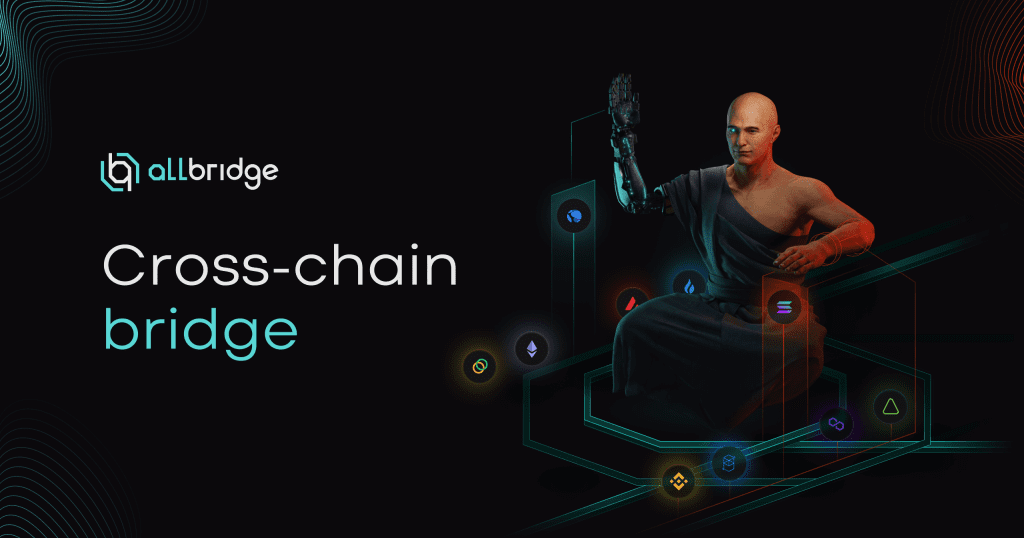
Features
- Trade All Tokens with Ease
- On-chain Consensus for Speed and Security
- Fast Processing Speed
- Dynamic Fee System and Transaction Fee Limitation Mechanism
- Stringent Security Measures
- Transparency Through On-chain Consensus
- Modular Architecture Supporting All Blockchains
- Streamlined Single-Signature Method
- Flexibility for Validators
- Operational Control and Validator Support
Allbridge empowers users by allowing them to add tokens seamlessly, thanks to the specially designed interface. Users can stake, add tokens, and trade them across various blockchains, enhancing flexibility and accessibility.
Departing from the conventional approach, Allbridge executes on-chain oracle consensus to ensure both speed and security. By conducting this process on-chain, the platform leverages the fast transaction speeds and cost-effectiveness of the Solana blockchain, making transactions more efficient.
One of Allbridge’s primary strengths lies in its swift processing speed for asset transfers across different blockchains. Traditional cross-chain transactions involve two steps: the initial transaction on the source blockchain and a subsequent transaction on the destination blockchain.
Allbridge streamlines this process, making the transfer duration contingent on the confirmation speed of the relevant blockchain. Notably, if the confirmation speed is high, the transfer can be completed within a remarkably short timeframe.
Allbridge introduces a dynamic fee system that empowers users to optimize their costs associated with asset transfers. Users have the ability to reduce bridge costs by engaging in staking activities on the source blockchain prior to initiating a transaction.
By staking, users not only contribute to a more cost-efficient bridge experience but also benefit from a unique reward system. Specifically, 80% of the fees generated are directed to the ABR staking pool on a designated chain, subsequently distributed among stakers as a reward.
Ensuring the safety of digital assets is paramount in the blockchain space, and Allbridge takes a proactive approach to security. The platform recently underwent a comprehensive audit conducted by Hacken, a renowned cybersecurity firm.
The audit meticulously examined Allbridge for potential security vulnerabilities, and the platform emerged unscathed, affirming its commitment to providing a secure environment for users.
The on-chain consensus mechanism not only enhances speed and security but also contributes to complete transparency. Allbridge’s Validator systematically verifies transactions with blocks, promptly detecting and addressing errors. This level of transparency is crucial for maintaining the integrity of the entire system.
Recognizing the diversity in blockchain structures, Allbridge adopts a modular architecture that accommodates all blockchains. Validators have the flexibility to support their preferred blockchains on the platform, ensuring inclusivity across the blockchain spectrum.
In contrast to the conventional process requiring confirmation from multiple validators, Allbridge aims to simplify transactions with a single-signature method. Validators need only confirm that the transaction is acceptable, streamlining the trading process.
Allbridge prioritizes the autonomy of validators by allowing them to choose the blockchains they wish to participate in when confirming transactions. This flexibility not only enhances convenience but also caters to the unique preferences of validators contributing to the project.
Allbridge maintains operational control through periodic reports, transaction tracking, and validator support for selected blockchains. This approach ensures a balance between platform activities and validator commitments, fostering a collaborative environment within the blockchain community.
Symbiosis
Overview
Symbiosis is a decentralized multi-chain liquidity protocol. The protocol, designed to aggregate liquidity seamlessly across various chains compatible with the Ethereum Virtual Machine (EVM) and non-EVM compatible blockchains, such as Terra and Solana, is set to revolutionize cross-chain transactions. Symbiosis is also one of the best Solana bridges at the moment.
Unlike conventional decentralized exchanges (DEXs), Symbiosis eliminates the complexities associated with swapping tokens across different blockchains. The protocol’s unique features empower users to execute transactions and swap assets effortlessly on a multitude of blockchains, fostering interoperability within the DeFi ecosystem.

Features
- Complete Decentralization
- Seamless Interoperability Across Blockchains
- Asset Security Through No Asset Holding
- Limitless Liquidity Between Blockchains
Symbiosis operates on an entirely decentralized model, ensuring independence from any single entity. This approach guarantees that no party can obstruct the protocol’s operations or censor user access. By eliminating centralized control, Symbiosis empowers users with unprecedented freedom and security in their blockchain transactions.
At the core of Symbiosis is its mission to connect all blockchains, creating a unified bridge between diverse networks. The protocol currently supports an extensive array of blockchains, including Ethereum, Polygon, BNB Chain, Avalanche, Boba, Aurora, Near, Aptos, Sui, zkSync Era, and more. This comprehensive integration enables users to navigate the decentralized landscape effortlessly, promoting inclusivity and expanding the possibilities of cross-chain interactions.
Symbiosis places a strong emphasis on user asset security by adopting a unique approach – no one, not even the Symbiosis team, has access to user assets. This commitment to non-custodial practices ensures that users retain complete control and ownership of their assets throughout any transaction, fostering trust in the protocol.
Focusing on popular token liquidity pairs like Ethereum, USDC, or USDT across various blockchains, Symbiosis aims to provide the lowest price slippage for users. The project has already expanded to support different liquidity pairs on multiple blockchains, showcasing its dedication to unlocking unlimited liquidity possibilities and optimizing the overall decentralized finance experience.
Conclusion
The transfer of digital assets to Solana’s ecosystem emerges as a flexible, efficient, and secure process. The user-friendly interfaces provided by Solana bridges guarantee a seamless transition for assets, facilitating smooth movements across a diverse range of blockchains.
As the demand for interoperability and accessibility continues to grow in the blockchain space, Solana stands out as a reliable and user-centric platform for digital asset transfers. Hopefully this article has helped you gain more knowledge about the top Solana bridges to have more choices for yourself.
| DISCLAIMER: The information on this website is provided as general market commentary and does not constitute investment advice. We encourage you to do your own research before investing. |






















